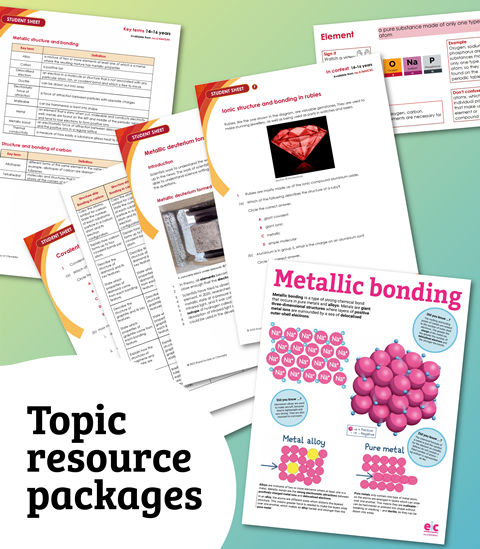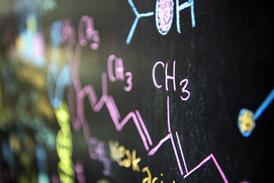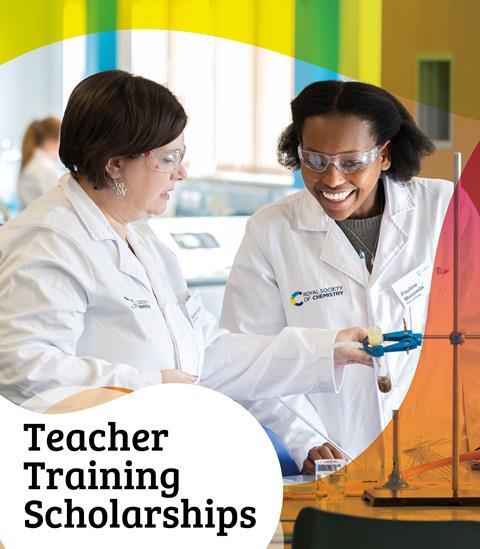All RSC Education articles in Non-EiC content – Page 47
-
 Resource
ResourceStarters for 10: Advanced level 1 (16–18)
This chapter in our Starters for ten series covers quantitative chemistry, atomic structure, bonding, trends in the periodic table, organic chemistry, thermodynamics, kinetics, equilibria, redox, analysis and experimental skills.
-
 Resource
ResourceSmartphone spectrometer
Make your own spectrometer with a DVD and a smartphone camera. This resource includes teacher, technician, and student guides.
-
 Resource
ResourceScience concept cartoons: exothermic and endothermic reactions
Spark discussion and stimulate thinking about exothermic and endothermic reactions in a way that encourages pupils to share their ideas.
-
 Demonstration
DemonstrationThe equilibrium between two coloured cobalt species
In this demonstration the equilibrium between two different coloured cobalt species is disturbed. Le Chatelier’s principle is used to predict a colour change.
-
 Resource
ResourceJournal articles made easy: Water oxidation
This article looks at photocatalytic water oxidation and producing an artificial water photooxidation system, including how this could be used to generate renewable energy. It will help you understand the research the journal article is based on, and how to read and understand journal articles. The research article was ...
-
 Resource
ResourceWales national curriculum guide: key stage 2 science
Use this document when planning schemes of work or when looking for resources that are related to specific national curriculum statements.
-
 Resource
ResourceEngland national curriculum guide: key stage 2 science
A linking document for primary science teachers in England, which maps Royal Society of Chemistry resources to statements from the key stage 2 science sampling framework, which aligns with the national curriculum science programmes of study.
-
 Resource
ResourceReflux with addition
A reactant is added to the refluxing reaction mixture in a controlled way via an addition funnel. This can be done to prevent exothermic reactions getting out of control. Video: Reflux with addition video
-
 Resource
ResourceScience concept cartoons: what holds atoms together?
Spark discussion and stimulate thinking about what holds atoms together in a way that encourages pupils to share their ideas.
-
 Class experiment
Class experimentPrecipitation reactions of lead nitrate
Compare the colours of various lead compounds to identify which would be good pigments in this microscale practical. Includes kit list and safety instructions.
-
 Resource
ResourceAsparagus pee
A video explaining that asparagus should be cooked in butter rather than water because the molecules responsible for its flavour are water-soluble, and a worksheet about the molecules responsible for ‘asparagus pee’.
-

-
 Resource
ResourceOn This Day – Sep 30 : Discovery of oxygen
Unfortunately the letter from the Swedish chemist was never acknowledged and Joseph Priestley published the discovery first. Scheele was trounced in the announcement of other discoveries as well. For this reason, Isaac Asimov nicknamed him “hard-luck Scheele”.
-
 Class experiment
Class experimentSome reactions of sulfur dioxide
Observe the reactions of sulfur dioxide with potassium manganate (IV), iodide/iodate mixture and indicator solution. Includes kit list and safety instructions.
-
 Class experiment
Class experimentThe determination of copper in brass
Try this microscale class practical to investigate how much copper there is in brass using nitric acid. Includes kit list and safety instructions.
-
 Class experiment
Class experimentMicroscale reactions of hydrogen sulfide
Observe the reactions of hydrogen sulfide with lead nitrate, silver nitrate and potassium manganate(VII) in this microscale practical. Includes kit list and safety instructions.
-
 Class experiment
Class experimentMicroscale reactions of ammonia
Try this practical to explore the reactions of ammonia with indicator solution, copper(II) sulfate solution and Nessler’s reagent. Includes kit list and safety instructions.
-
 Class experiment
Class experimentMeasuring density
By measuring the relative mass of seawater and tap water, students will be able to discover the density of these liquids. Includes kit list and safety instructions.
-
 Class experiment
Class experimentThe chemistry of thiosulfate ions
Sodium thiosulfate has several interesting reactions with a variety of chemicals. This experiment will let students explore and record these reactions. Includes kit list and safety instructions.
-
 Class experiment
Class experimentSome reactions of nitrogen dioxide
Using a range of chemicals and solutions, students can create an experiment that will explore some of the reactions of nitrogen dioxide. Includes kit list and safety instructions.











